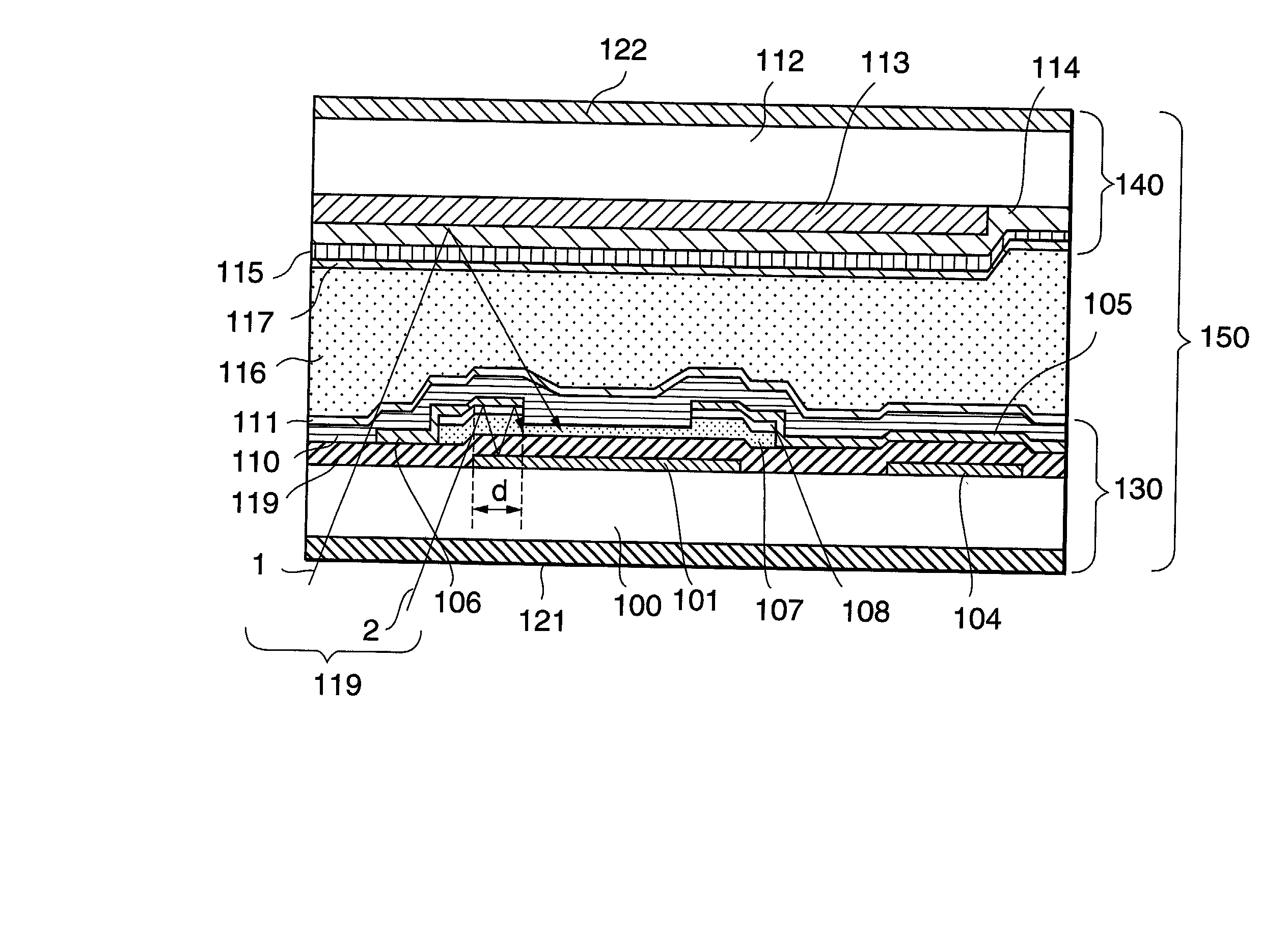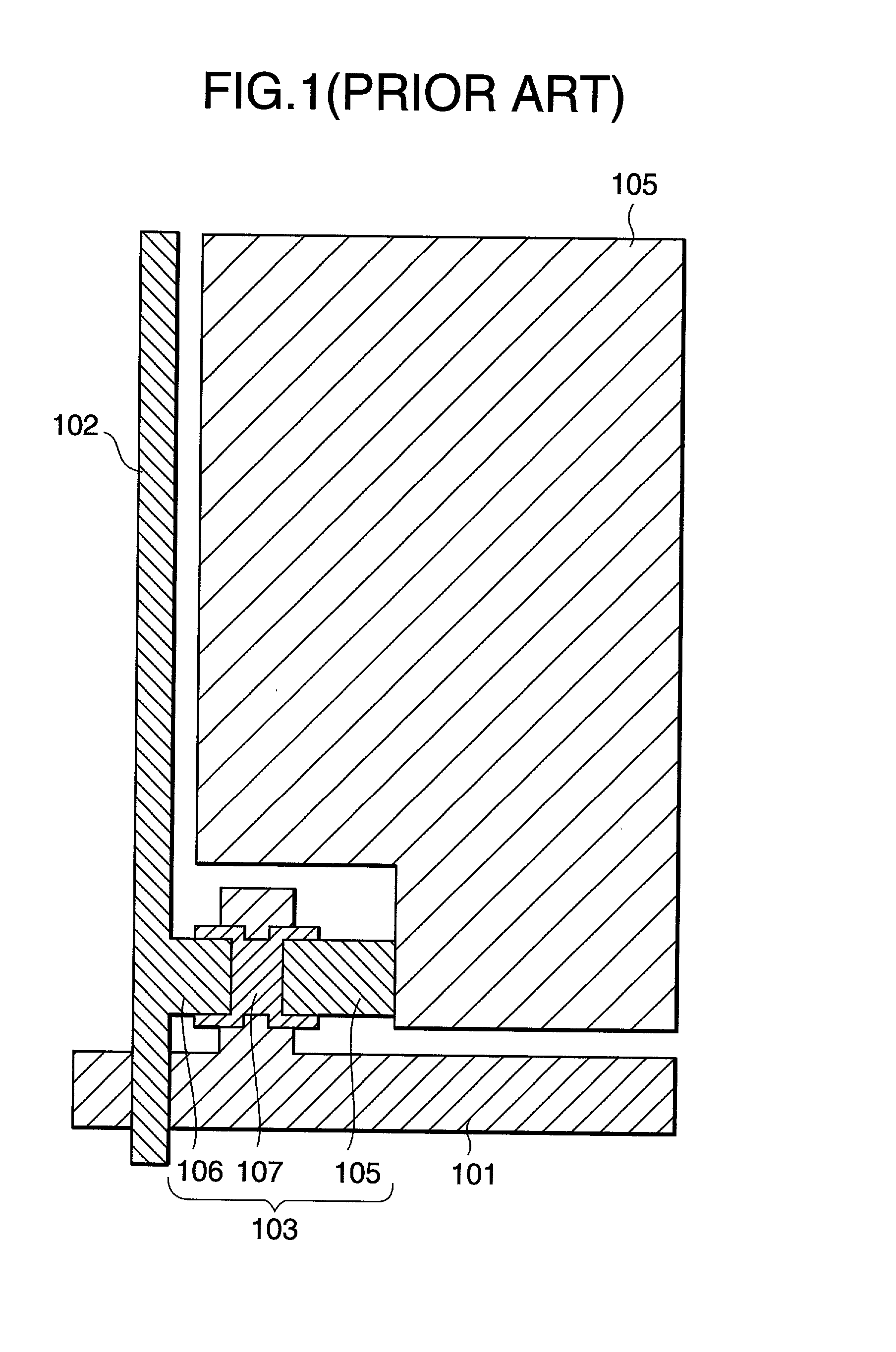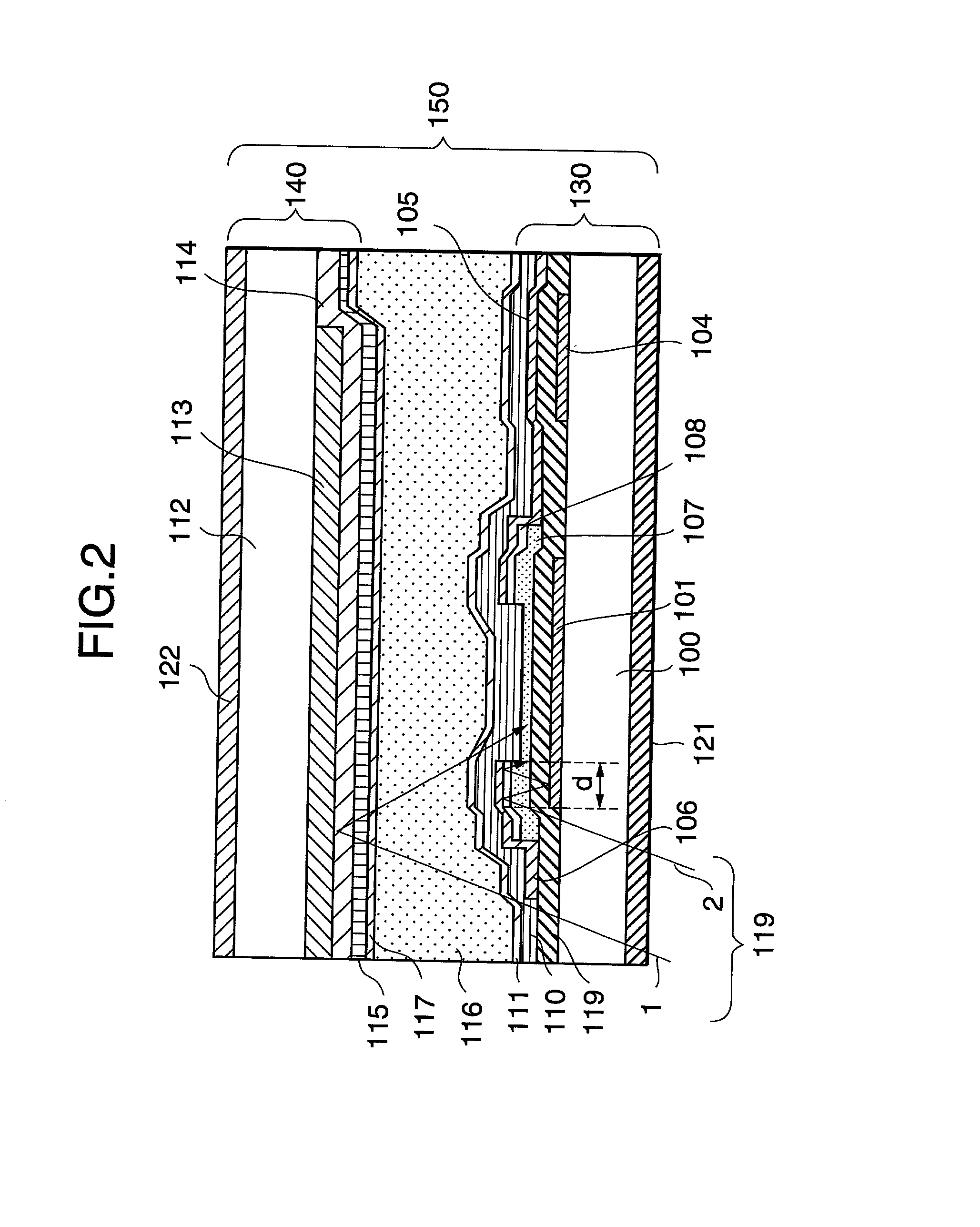Active matrix liquid crystal display device and switching element used therein
a liquid crystal display device and active matrix technology, applied in the direction of identification means, instruments, optics, etc., can solve the problems of pixel potential, uneven display, and reduced luminance of a modul
- Summary
- Abstract
- Description
- Claims
- Application Information
AI Technical Summary
Benefits of technology
Problems solved by technology
Method used
Image
Examples
first embodiment
[0045] the invention will be explained with reference to the accompanying drawings.
[0046] FIG. 4 is a plan view of a unit pixel of a thin-film-transistor array substrate 130 of an active matrix liquid crystal display device according to the first embodiment, and shows the portion of the device figured on the lower side of the cross-sectional view of FIG. 6. FIG. 5 is an enlarged plan view of a thin film transistor portion of each unit pixel. FIG. 6 is a cross-sectional view taken along A-A' in FIG. 4, also illustrating the portion of the device opposite to the thin-film-transistor array substrate 130.
[0047] As shown in FIGS. 4 through 6, the active matrix liquid crystal display device according to the first embodiment of the invention has a overall construction comprising a thin-film-transistor array substrate (hereinafter referred to as TFT substrate) 130, a transparent opposing substrate 140 provided apart from and in parallel to the TFT substrate 130, and a liquid crystal 116 int...
second embodiment
[0097] The second embodiment of the invention will be explained with reference to the accompanying drawings.
[0098] FIG. 15 is a plan view of a unit pixel of a TFT substrate 130 of an active matrix liquid crystal display device according to the second embodiment, and shows the portion of the device figured on the lower side of the cross-sectional view of FIG. 6. FIG. 16 is an enlarged plan view of a thin film transistor portion of each unit pixel. FIG. 17 is a cross-sectional view taken along B-B' in FIG. 15, also illustrating the portion of the device opposite to the TFT substrate 130.
[0099] The active matrix liquid crystal display device according to the second embodiment illustrated in FIG. 15 is different from the active matrix liquid crystal display device according to the first embodiment illustrated in FIGS. 4 to 6 in the points that the amorphous silicon film 107 is entirely included in the gate line 101. That is, the elements constituting the TFT 103 are formed so as to sati...
PUM
| Property | Measurement | Unit |
|---|---|---|
| refractive index | aaaaa | aaaaa |
| channel length | aaaaa | aaaaa |
| outgoing angle θ0 | aaaaa | aaaaa |
Abstract
Description
Claims
Application Information
 Login to View More
Login to View More - R&D
- Intellectual Property
- Life Sciences
- Materials
- Tech Scout
- Unparalleled Data Quality
- Higher Quality Content
- 60% Fewer Hallucinations
Browse by: Latest US Patents, China's latest patents, Technical Efficacy Thesaurus, Application Domain, Technology Topic, Popular Technical Reports.
© 2025 PatSnap. All rights reserved.Legal|Privacy policy|Modern Slavery Act Transparency Statement|Sitemap|About US| Contact US: help@patsnap.com



